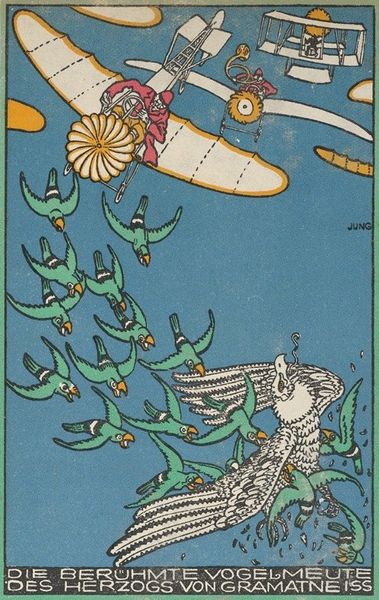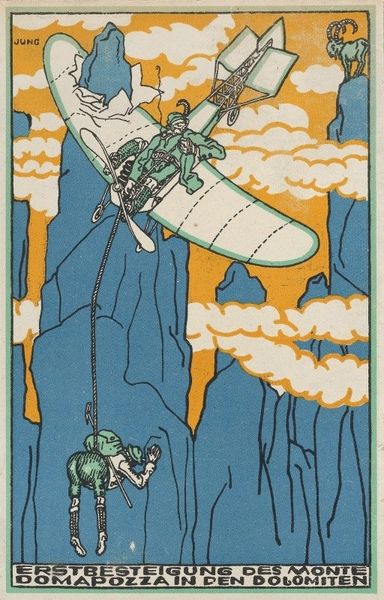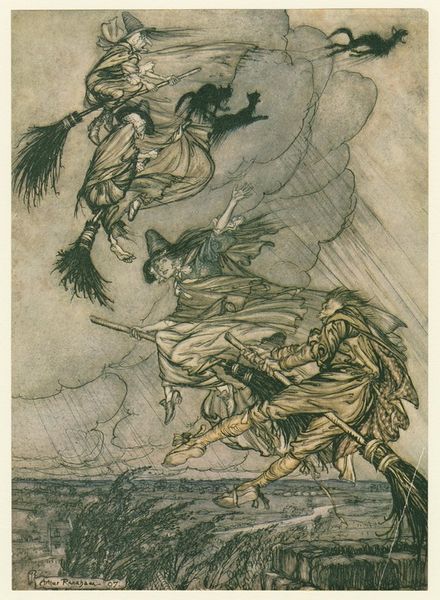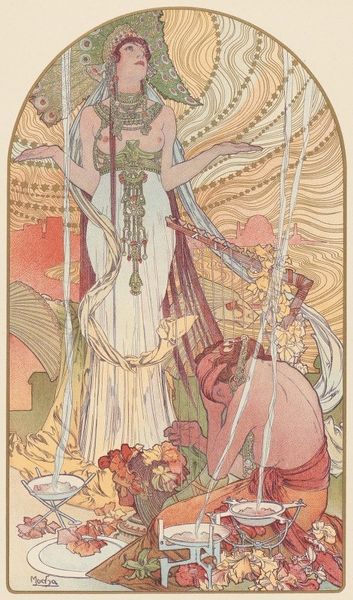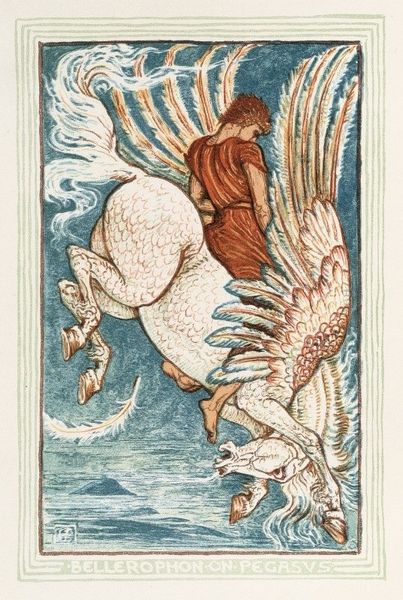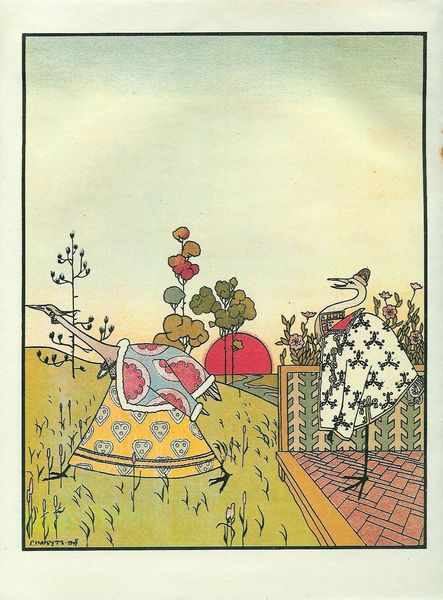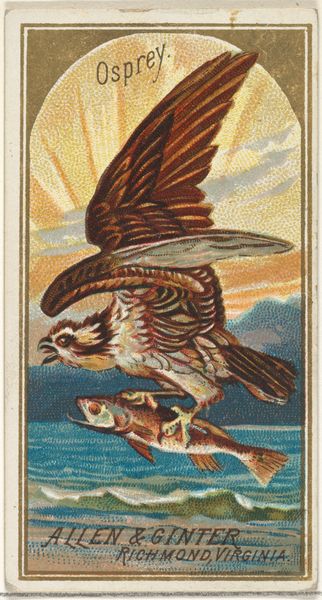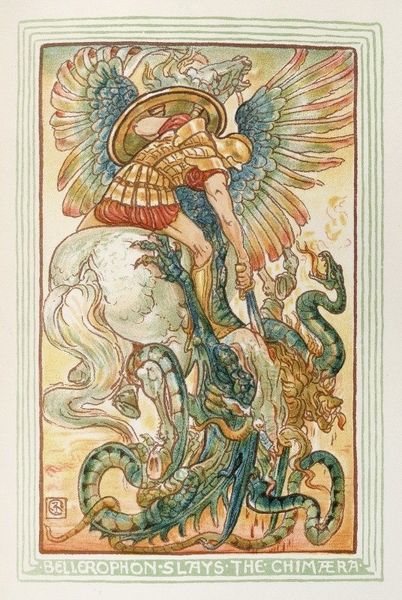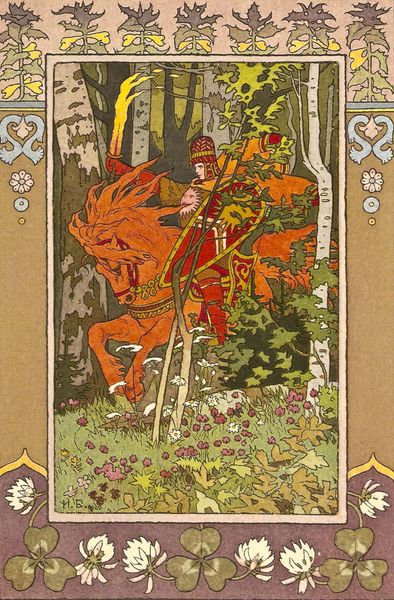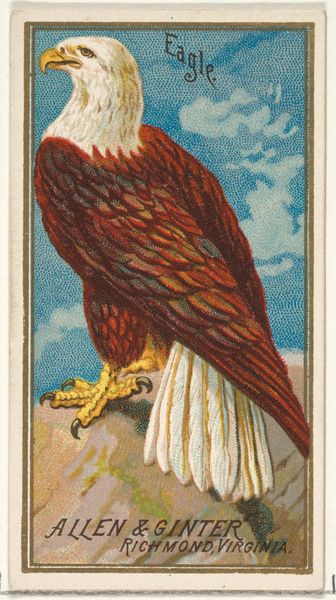
Copyright: Public Domain: Artvee
Curator: Oh, there's such an uncanny quality to the forms within William Wallace Denslow's, *The Monkeys caught Dorothy in their arms and flew away with her.* This illustrative plate dates to 1900. What's your immediate impression? Editor: The whimsical absurdity of it all strikes me first. These creatures, a band of winged monkeys, abduct Dorothy and the Tin Man mid-air! One gets a very dark and absurd tone to it all. Curator: Indeed. Observe the deliberate distortion of the monkey’s faces, almost grotesque, against the saccharine portrayal of Dorothy. There's an interesting tension in how Denslow employs caricature. Editor: Well, in that period, illustrated books for children were certainly tools to perpetuate the colonial narratives, so one has to wonder how innocent the artist remained. I would note the social dimensions to Denslow's aesthetics; even though the subject has the air of fantasy, such representations weren't exempt from political discourse. Curator: Yes, I follow. Yet, if we center instead on the formal properties of the work, we can observe how skillfully Denslow juxtaposes flatness with a kind of imagined depth, using line and color. Notice that delicate, almost ukiyo-e aesthetic. The picture plane is organized meticulously, directing the eye along these lines of flight. Editor: Precisely, and there, that visual lightness underscores the troubling narratives, how something disturbing can easily cloak itself under playful veneer. The popularity of the "Wizard of Oz," from Baum’s book to the MGM adaptation, made certain stories into public events, framing much of America's relationship to the idea of otherness at the time. Curator: Perhaps you are right. Even so, the efficiency and execution of Denslow's visual strategies deserves acknowledgement; it achieves its peculiar emotional effect so deliberately. I see it primarily as an effective application of artifice. Editor: No question it possesses artistic qualities. To study this through history is to accept there is always context, not just a surface but how the narrative participates in culture. Curator: Well said.
Comments
No comments
Be the first to comment and join the conversation on the ultimate creative platform.
